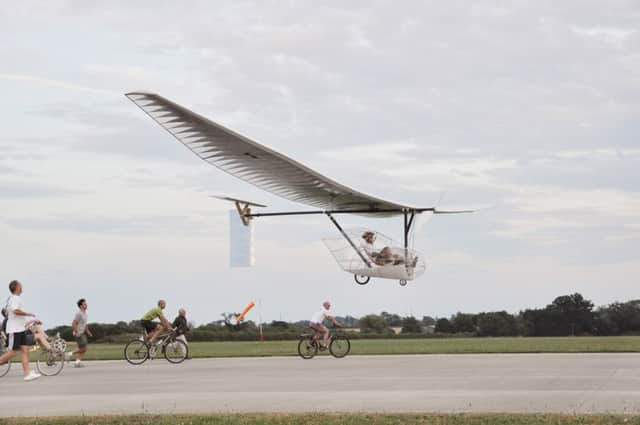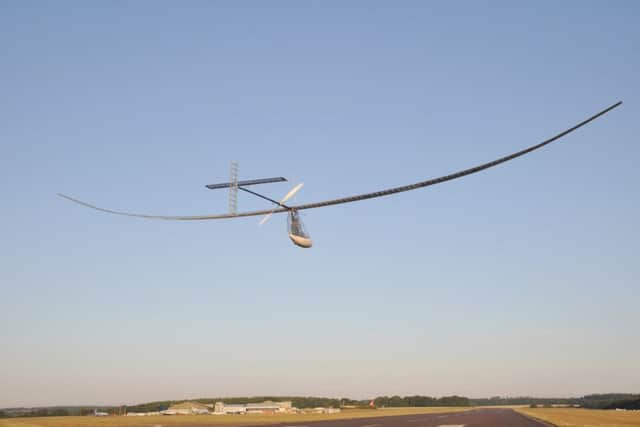Is it a bike? Is it a plane? Actually it's both...The Icarus Cup is coming to Northamptonshire


The British Human Powered Flying Club (BHPFC) is set to begin the annual Icarus Cup at Sywell Aerodrome this weekend.
The organisation formed in 2014, and brings together brave engineers from across the country to pit their winged contraptions against each other. The only rule is the craft must be powered by human energy alone.
Advertisement
Hide AdAdvertisement
Hide AdBHPFC chairman Roger Warren said the five contraptions entered will each have to perform a series of tests, turns and distance flights as part of the competition, held between July 16 and 24.


He said: “We will be adopting the same formula as previous events, and our competition rules have been ratified by the FAI and include varied tasks for the competitors to perform.
“These tasks are designed to test every aspect of the capability of the aircraft The competition is scored for both pilots and aircraft teams. The winners will be the team and pilot who have accrued the most points.”
Two of the competing crafts are student projects by the University of Sheffield and the University of Bath.
Advertisement
Hide AdAdvertisement
Hide AdHowever the remaining three draw on experts in the engineering world.


The “Betterfly” has been designed by Northamptonian David Barford whio is a Formula One production engineer with Brackley-based Mercedes.
The pilots, who are also the engines of these aircraft, need to pump out about 300 watts of energy continuously to keep them in the air.
The longest ever flight recorded in a human powered craft was a remarkable 74 miles, by Greek Olympic cyclist Kanellos Kanellopoulos and his craft Daedalus in 1988.
The British record stands some way behind that at 1070 metres, set by John Potter and his craft Jupiter back in 1972.